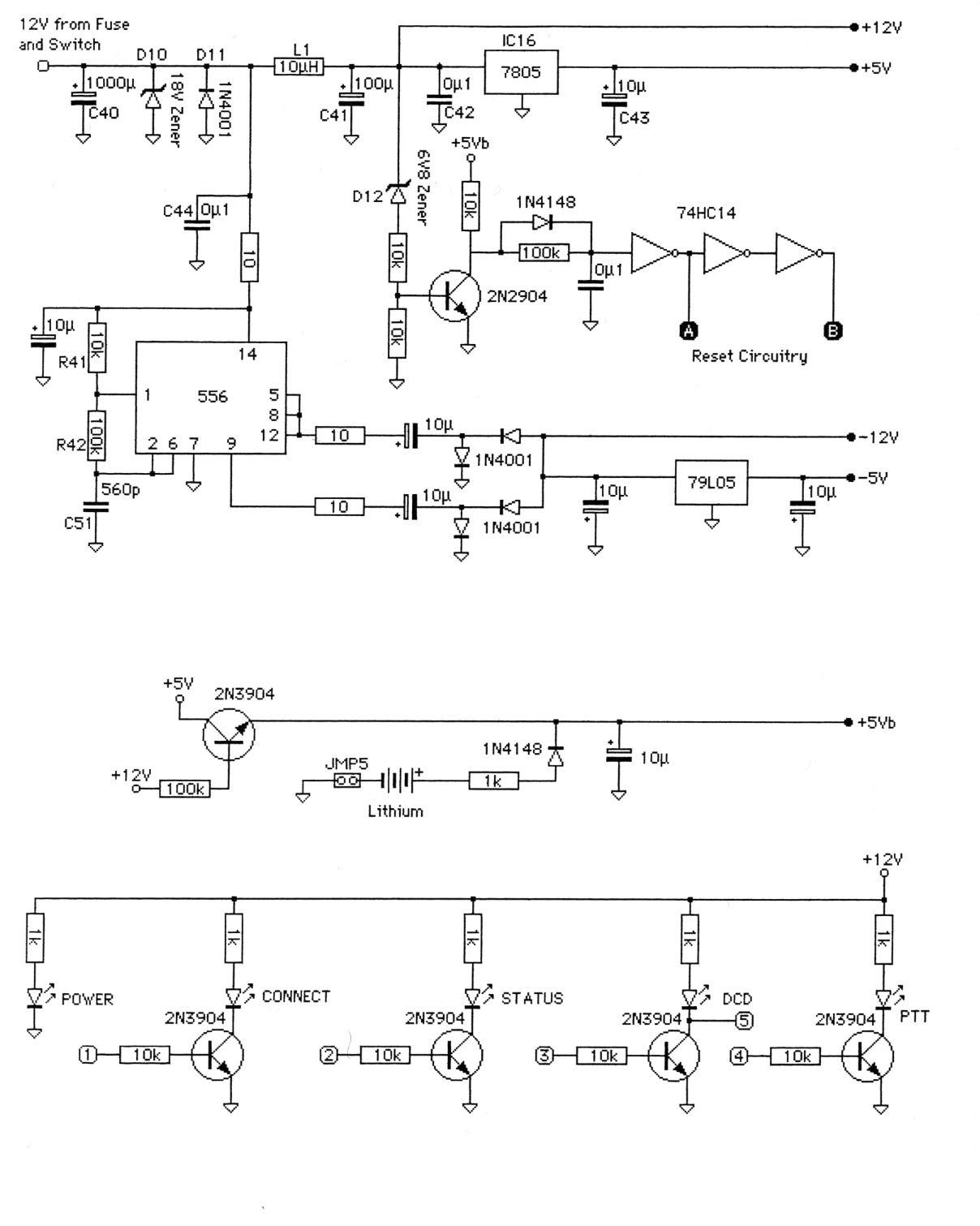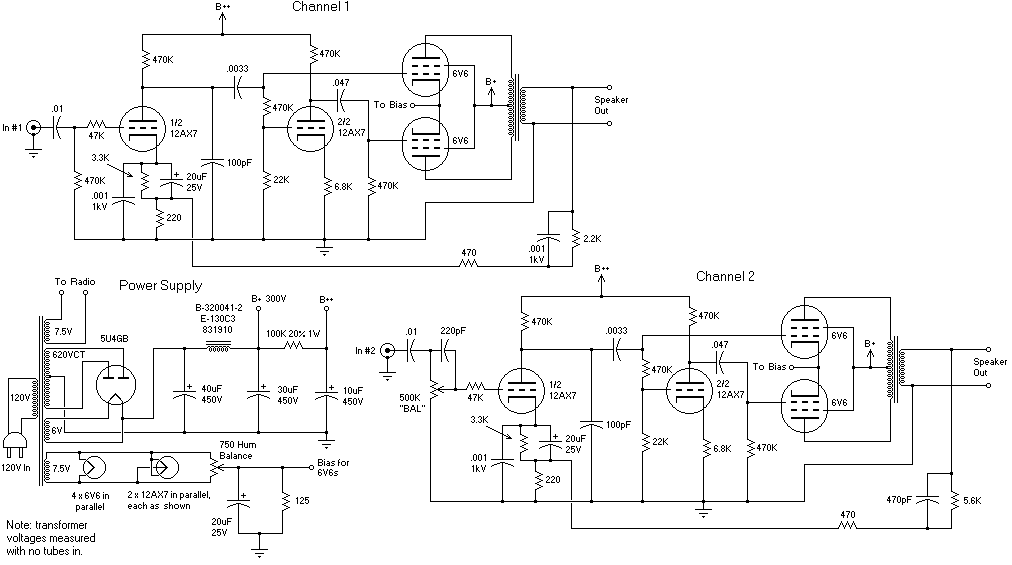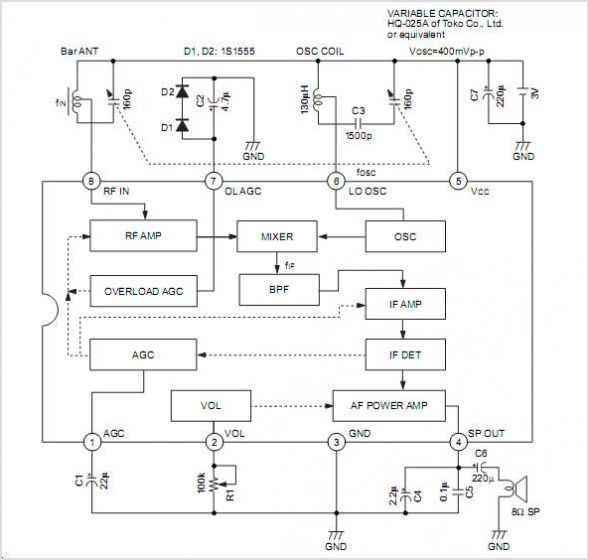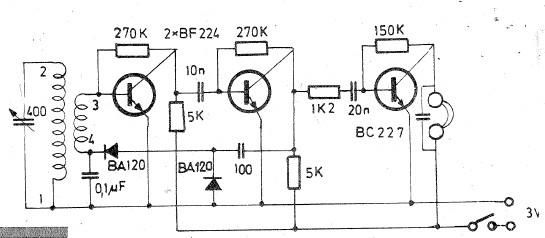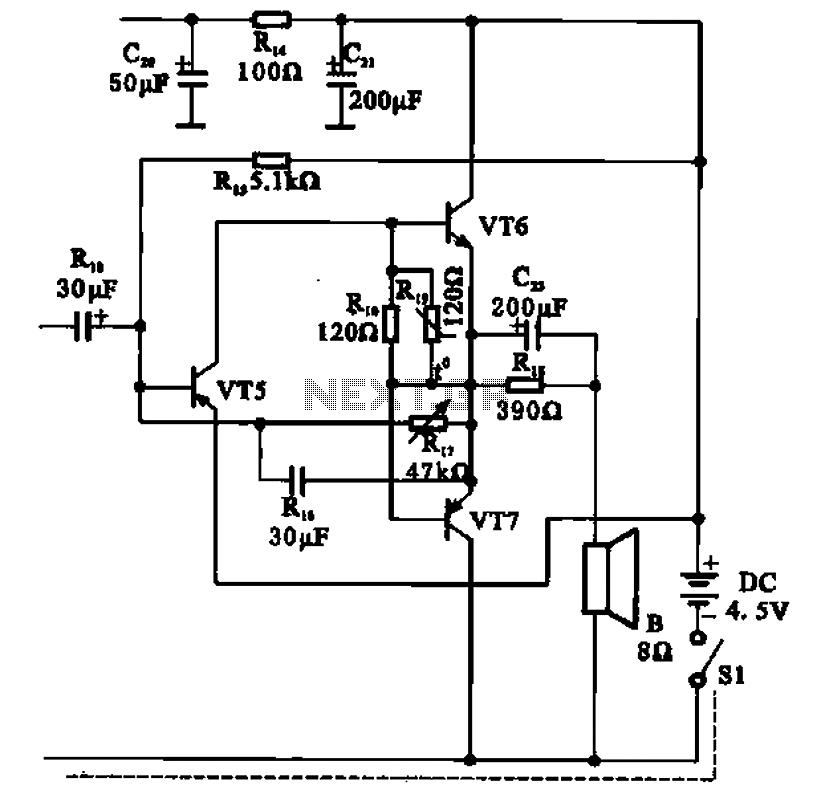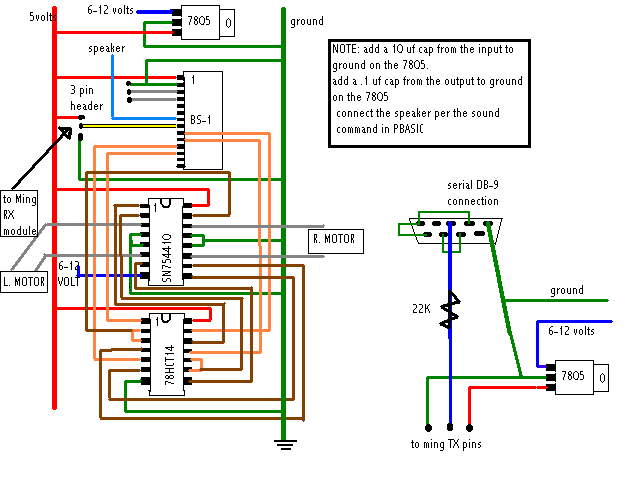
Understand Radio Architectures
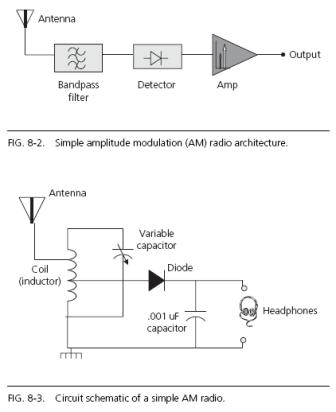
The fundamental operation of an RF front end is straightforward: it detects and processes radio waves transmitted at a specific known frequency or range of frequencies and modulation format. The modulation carries information of interest, such as voice, audio, data, or video. The receiver must be tuned to resonate with the transmitted frequency or frequencies for detection. Received signals are filtered from surrounding signals and noise and amplified before undergoing demodulation to extract the desired information from the radio waves. The overall process consists of three steps: filtering, amplification, and demodulation. However, the actual implementation of this process, such as designing the physical RF receiver printed-circuit board (PCB), depends on the type, complexity, and quantity of data being transmitted. For instance, designing an RF front end for simple amplitude-modulated (AM) signals requires less effort and hardware compared to building an RF front end for advanced third-generation (3G) mobile telecommunications handsets. The performance of analog components has improved due to integrated circuit (IC) process advancements, and the costs of powerful digital-signal-processing (DSP) hardware and software have decreased, affecting how different RF front-end architectures are realized. Nevertheless, basic requirements for an RF front end, such as frequency range, carrier type, RF link budget, and design constraints regarding power, performance, and size, have remained relatively consistent despite variations in radio architectures. One basic RF receiver architecture for detecting modulated signals is the amplitude modulation (AM) detector receiver. The name derives from the conversion of information like speech and music into amplitude-modulated signals on a carrier wave. An RF signal can be demodulated at the receiving end using a simple diode detector. A basic AM receiver, such as a simple crystal radio, requires an antenna, RF filter, detector, and, optionally, an amplifier to boost the recovered information to a suitable level for listening devices like speakers or headphones. The antenna, which is capacitive at low frequencies used for AM broadcasting, is series matched with an inductor to maximize current and voltage across the secondary coil. A variable capacitance filter may be employed to select the designated frequency band and block unwanted signals, such as noise. The filtered signal is then converted to demodulate the AM signal and recover the information. The heart of the AM architecture is the detector demodulator. In early crystal radios, the detector was a fine metal wire contacting a crystal of galena, creating a point contact rectifier or crystal detector. This fine metal contact was often referred to as a catwhisker. While point-contact diodes are still used in communication receivers and radar, most have been replaced by pn-junction diodes, which are more reliable and easier to manufacture. For a simple AM receiver, the detector diode functions as a half-wave rectifier, converting a received AC signal to a DC signal by blocking either the negative or positive portion of the waveform. A shunt inductor is typically placed in front of the detector to serve as an RF choke, maintaining the integrity of the RF signal.
The RF front end comprises several critical components that work in concert to ensure effective signal reception and processing. The antenna is designed to capture the desired radio waves, and its characteristics must be matched to the frequency of interest to optimize performance. The RF filter plays a crucial role in eliminating unwanted signals and noise, ensuring that only the desired frequency components are passed to the next stage.
In the case of the AM detector receiver, the detector diode's role cannot be understated. It rectifies the incoming RF signal, allowing the audio information to be extracted. The choice of diode, whether a traditional point-contact type or a more modern pn-junction diode, affects the performance and reliability of the receiver. The configuration of the circuit, including the placement of inductors and capacitors, is essential for tuning the receiver to the desired frequency and ensuring effective demodulation.
Furthermore, the design of the PCB is paramount in minimizing losses and ensuring that the RF signals are transmitted with minimal degradation. The layout must consider aspects such as trace width, ground planes, and component placement to optimize signal integrity and reduce potential interference.
Overall, the design of an RF front end is a complex task that requires careful consideration of various factors, including the type of modulation, the frequency of operation, and the specific application requirements. As technology continues to evolve, advancements in materials and component design will further enhance the performance of RF front ends, making them more efficient and capable of handling increasingly complex signals.The fundamental operation of an RF front end is fairly straightforward: it detects and processes radio waves that have been transmitted with a specific known frequency or range of frequencies and known modulation format. The modulation carries the information of interest, be it voice, audio, data, or video. The receiver must be tuned to resonate w ith the transmitted frequency or frequencies in order to detect them. Those received signals are then filtered from all surrounding signals and noise and amplified prior to a process known as demodulation, which removes the desired information from the radio waves that carried it. These three steps ”filtering, amplification and demodulation ”detail the overall process. But actual implementation of this process (i. e. , designing the physical RF receiver printed-circuit board (PCB) depends upon the type, complexity, and quantity of the data being transmitted.
For example, designing an RF front end to handle a simple amplitude-modulated (AM) signal requires far less effort and hardware (and even software) than building an RF front end for the latest third-generation (3G) mobile telecommunications handset. Because of the enhanced performance of analog components due to IC process improvements and decreasing costs of more powerful digital-signal-processing (DSP) hardware and software functions, the ways that different RF front-end architectures are realized has changed over the years.
Still, the basic requirements for an RF front end, such as the frequency range and type of carrier to be received, the RF link budget, and the power, performance, and size restrictions of the front-end design, remain relatively the same in spite of the differences in radio architectures. One of the basic RF receiver architectures for detecting a modulated signal is the amplitude modulation (AM) detector receiver (see Fig.
8-2). The name comes from the fact that information like speech and music could be converted into amplitude (voltage) modulated signals riding on a carrier wave. Such an RF signal could be de-modulated at the receiving end by means of a simplediode detector. All that is needed for a basic AM receiver ”like a simple crystal radio ”is an antenna, RF filter, detector, and (optional) amplifier to boost the recovered information to a level suitable for a listening device, such as a speaker or headphones.
The antenna, which is capacitive at the low frequencies used for AM broadcasting, is series matched with an inductor to maximize current through both, thus maximizing the voltage across the secondary coil. A variable capacitance filter may be used to select the designed frequency band (or channel) and to block any unwanted signals, such as noise.
The filtered signal is then converted to demodulate the AM signal and recover the information. Fig. 8-3 represents a schematic version of the block diagram shown in Fig. 8-2. The heart of the AM architecture is the detector demodulator. In early crystal radios, the detector was simply a fine metal wire that contacted a crystal of galena (lead sulfide), thus creating a point contact rectifier or crystal detector. In these early designs, the fine metal contact was often referred to as a catwhisker. Although point-contact diodes are still in use today in communication receivers and radar, most have been replaced by pn-junction diodes, which are more reliable and easier to manufacture.
For a simpleAM receiver, the detector diode acts as a half-wave rectifier to convert or rectify a received AC signal to a DC signal by blocking the negative or positive portion of thewaveform (see Fig. 8-4). A half-wave rectifier clips the input signal by allowing either the positive or negative half of theAC wave to pass easily through the rectifier, depending upon the polarity of the rectifier.
A shunt inductor is typically placed in front of the detector to serve as an RF choke. The inductor maintains the 🔗 External reference
The RF front end comprises several critical components that work in concert to ensure effective signal reception and processing. The antenna is designed to capture the desired radio waves, and its characteristics must be matched to the frequency of interest to optimize performance. The RF filter plays a crucial role in eliminating unwanted signals and noise, ensuring that only the desired frequency components are passed to the next stage.
In the case of the AM detector receiver, the detector diode's role cannot be understated. It rectifies the incoming RF signal, allowing the audio information to be extracted. The choice of diode, whether a traditional point-contact type or a more modern pn-junction diode, affects the performance and reliability of the receiver. The configuration of the circuit, including the placement of inductors and capacitors, is essential for tuning the receiver to the desired frequency and ensuring effective demodulation.
Furthermore, the design of the PCB is paramount in minimizing losses and ensuring that the RF signals are transmitted with minimal degradation. The layout must consider aspects such as trace width, ground planes, and component placement to optimize signal integrity and reduce potential interference.
Overall, the design of an RF front end is a complex task that requires careful consideration of various factors, including the type of modulation, the frequency of operation, and the specific application requirements. As technology continues to evolve, advancements in materials and component design will further enhance the performance of RF front ends, making them more efficient and capable of handling increasingly complex signals.The fundamental operation of an RF front end is fairly straightforward: it detects and processes radio waves that have been transmitted with a specific known frequency or range of frequencies and known modulation format. The modulation carries the information of interest, be it voice, audio, data, or video. The receiver must be tuned to resonate w ith the transmitted frequency or frequencies in order to detect them. Those received signals are then filtered from all surrounding signals and noise and amplified prior to a process known as demodulation, which removes the desired information from the radio waves that carried it. These three steps ”filtering, amplification and demodulation ”detail the overall process. But actual implementation of this process (i. e. , designing the physical RF receiver printed-circuit board (PCB) depends upon the type, complexity, and quantity of the data being transmitted.
For example, designing an RF front end to handle a simple amplitude-modulated (AM) signal requires far less effort and hardware (and even software) than building an RF front end for the latest third-generation (3G) mobile telecommunications handset. Because of the enhanced performance of analog components due to IC process improvements and decreasing costs of more powerful digital-signal-processing (DSP) hardware and software functions, the ways that different RF front-end architectures are realized has changed over the years.
Still, the basic requirements for an RF front end, such as the frequency range and type of carrier to be received, the RF link budget, and the power, performance, and size restrictions of the front-end design, remain relatively the same in spite of the differences in radio architectures. One of the basic RF receiver architectures for detecting a modulated signal is the amplitude modulation (AM) detector receiver (see Fig.
8-2). The name comes from the fact that information like speech and music could be converted into amplitude (voltage) modulated signals riding on a carrier wave. Such an RF signal could be de-modulated at the receiving end by means of a simplediode detector. All that is needed for a basic AM receiver ”like a simple crystal radio ”is an antenna, RF filter, detector, and (optional) amplifier to boost the recovered information to a level suitable for a listening device, such as a speaker or headphones.
The antenna, which is capacitive at the low frequencies used for AM broadcasting, is series matched with an inductor to maximize current through both, thus maximizing the voltage across the secondary coil. A variable capacitance filter may be used to select the designed frequency band (or channel) and to block any unwanted signals, such as noise.
The filtered signal is then converted to demodulate the AM signal and recover the information. Fig. 8-3 represents a schematic version of the block diagram shown in Fig. 8-2. The heart of the AM architecture is the detector demodulator. In early crystal radios, the detector was simply a fine metal wire that contacted a crystal of galena (lead sulfide), thus creating a point contact rectifier or crystal detector. In these early designs, the fine metal contact was often referred to as a catwhisker. Although point-contact diodes are still in use today in communication receivers and radar, most have been replaced by pn-junction diodes, which are more reliable and easier to manufacture.
For a simpleAM receiver, the detector diode acts as a half-wave rectifier to convert or rectify a received AC signal to a DC signal by blocking the negative or positive portion of thewaveform (see Fig. 8-4). A half-wave rectifier clips the input signal by allowing either the positive or negative half of theAC wave to pass easily through the rectifier, depending upon the polarity of the rectifier.
A shunt inductor is typically placed in front of the detector to serve as an RF choke. The inductor maintains the 🔗 External reference
